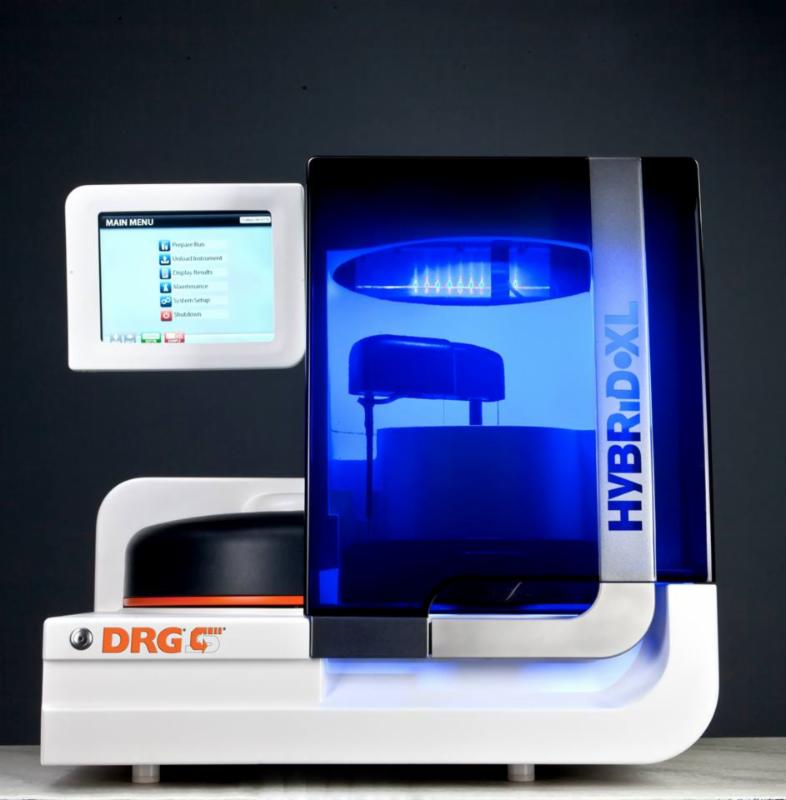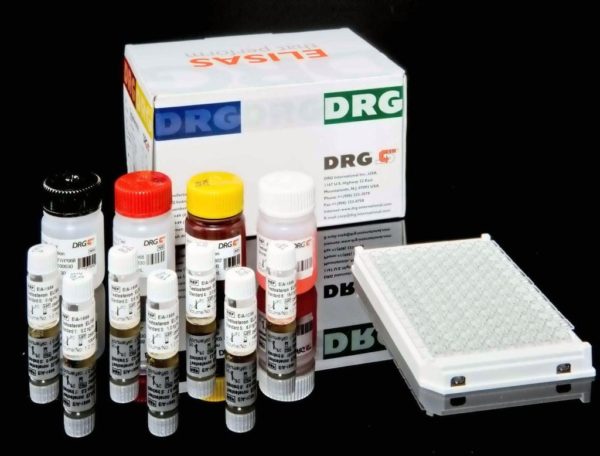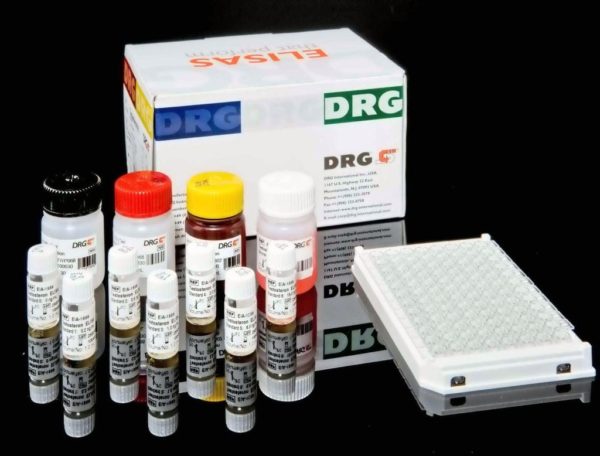Description
INTRODUCTION
Intended Use
The DRG:HYBRiD-XL Prolactin is an enzyme immunoassay for the quantitative in vitro diagnostic measurement of prolactin in serum.
Only for use with the DRG:HYBRiD-XL Analyzer.
Summary and Explanation
Human prolactin (lactogenic hormone) is secreted from the anterior pituitary gland in both men and women (1). Human prolactin is a single chain polypeptide hormone with a molecular weight of approximately 23 kDa (2). The release and synthesis of prolactin is under neuroendocrinal control, primarily through Prolactin Releasing Factor and Prolactin Inhibiting Factor (3).
Women normally have slightly higher basal prolactin levels than men; apparently, there is an estrogen- related rise at puberty and a corresponding decrease at menopause. The primary functions of prolactin are to initiate breast development and to maintain lactation. Prolactin also suppresses gonadal function (4,5).
During pregnancy, prolactin levels increase progressively to between 10 and 20 times normal values, declining to non-pregnant levels by 3-4 weeks post- partum (4). Breast feeding mothers maintain high levels of prolactin, and it may take several months for serum concentrations to return to non-pregnant levels (3,4).
The determination of prolactin concentration is helpful in diagnosing hypothalamic- pituitary disorders (3,4). Microadenomas (small pituitary tumors) may cause hyperprolactinemia, which is sometimes associated with male impotence (6). High prolactin levels are commonly associated with galactorrhea and amenorrhea.
Prolactin concentrations have been shown to be increased by estrogens, thyrotropin- releasing hormone (TRH), and several drugs affecting dopaminergic mechanisms (7,8,9,10). Prolactin levels are elevated in renal disease and hypothyroidism, and in some situations of stress, exercise, and hypoglycemia. Additionally, the release of prolactin is episodic and demonstrates diurnal variation (11). Mildly elevated prolactin concentrations should be evaluated taking these considerations into account. Prolactin concentrations may also be increased by drugs such as chloropromazine and reserpine, and may be lowered by bromocyptine and L-dopa (12).
PRINCIPLE OF THE TEST
The DRG:HYBRiD-XL Prolactin Kit is a solid phase enzyme-linked immunosorbent assay (ELISA) based on the principle of competitive binding.
The antibody coated wells (ACW) of the reagent cartridges are coated with a monoclonal (mouse) antibody directed towards a unique antigenic site of the prolactin molecule.
Endogenous prolactin of a patient sample competes with a prolactin-biotin conjugate (Enzyme Conjugate) for binding to the coated antibody. After incubation the unbound conjugate is washed off.
Bound biotin conjugate is detected by Streptavidin-HRP (Enzyme Complex). After incubation the unbound complex is washed off.
The amount of bound enzyme complex is inversely proportional to the concentration of prolactin in the sample.
Having added the substrate solution, the intensity of colour developed is inversely proportional to the concentration of prolactin in the patient sample.




